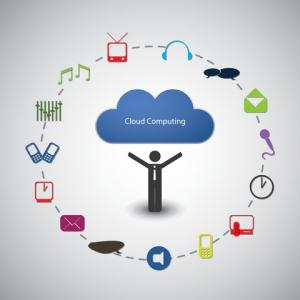Cloud computing is all the rage. “It’s become the phrase du jour,” says Gartner’s senior analyst Ben Pring, echoing many of his peers. The rise of the Internet, increasing bandwidth at the desktop and on the backbone, the movement towards outsourcing, the development of a service oriented architecture (SOA), mobile and wireless computing – all are part of the Cloud computing revolution. Market Research Media, cited in the Bloomberg report, says the Cloud market will reach $270 billion in 2020. Forrester predicts that the market will hit $55 billion by 2012 and about $241 billion by 2014.
The above predictions show a drive towards Cloud and Cloud enablement. It is equally important for the ISVs that they also understands this and adapt accordingly. Cloud opens up many opportunities for ISVs to extend market reach and grow revenue by reaching new customers, new market segments, and new geographies around the world. It also offers ways for ISVs to reduce costs and time to market. At the same time, it is changing the very way they do business. With customers willing to commit more of their budgets to Cloud IT in a bid to cut down their own costs, ISVs that embrace and adopt SaaS can gain advantage over their competitors, provided they choose the right Cloud platform provider. For ISVs, the move to the Cloud creates increased opportunity in several important ways.
Cloud opportunities for ISVs
In the adoption of Cloud, the biggest worry for ISVs is that selling software as a service over the internet (SaaS) requires a shift to subscription-based  revenue models. The “product selling” approach will be replaced by “service selling”. This is because it is no longer a packaged product being sold, but a service. In the short term, this means less revenue in the initial phase of a new product and greater up-front investment, but there are significant benefits to such an approach, especially in the longer term.
revenue models. The “product selling” approach will be replaced by “service selling”. This is because it is no longer a packaged product being sold, but a service. In the short term, this means less revenue in the initial phase of a new product and greater up-front investment, but there are significant benefits to such an approach, especially in the longer term.
The important thing to remember is that on-premise and Cloud-enabled software delivery are not mutually exclusive and it is possible to offer customers the best of both worlds.
Reducing costs
According to IDC, shifting applications onto a Cloud-enabled platform can decrease hardware, software and infrastructure costs in the development environment, while also lowering developer hours spent at all stages of the cycle, from design to philosophy, by as much as half. So the movement to Cloud will reduce the costs considerably for the ISVs as there will not be any need to build and test software for multiple operating systems and hardware configurations.
The model of delivering software as a service will allow economies of scale to the ISVs, as more new customers subscribe to the service, the cheaper it becomes to deliver applications to them. ISVs can reduce their own infrastructure costs as well by partnering and hosting software solutions on a partner’s platform.
Expanding your reach
The Cloud allows ISVs to have a global presence, giving customers around the world access to their products. They can massively expand their reach by offering their products as a service over the internet, not just in geographical terms, but also across different industries and sectors. For example, ISVs can add new Cloud-based functionality to their existing solutions, providing for greater mobility, more ease of use, and new features. Or they can extend existing solutions to new markets, given the greater geographical scope of the web. They also have an opportunity to serve new markets, with lower price points due to reduced development costs.
Improving time to market
With SaaS adoption, there will be an increase in the speed with which ISVs can bring their products to market and reach customers. Cloud computing provides greater capacity, faster time to market, and shorter sales cycles, as well as greater agility and flexibility. Organizations have more flexibility to roll out and support new business models and adapt business processes to meet market demands.
Improving flexibility
By adopting SaaS model, ISVs become more agile and are able to provide services at a much faster rate reducing the delivery time. This attracts new business for the ISVs. But it is not just about new customers; ISVs also need to ensure that their existing customer base is served well. It is important for them that they remain agile enough by offering monthly subscriptions and internet delivery to meet the changing needs of their existing customers. With Cloud movement happening all around, there is also a real sense of danger in failing to offer such a solution: if you do not move into the Cloud, your customers may well be tempted to go with a competitor who has.
Growing long-term revenue
Cloud-enabled delivery model has many benefits; one of the most important of them is that, it allows ISVs to cultivate long-term revenues by cutting costs, securing new customers, protecting their existing relationships and utilizing economies of scale. A monthly subscription model also provides ISVs with much more certainty about their future cash flow situation as they can predict very closely to what revenue will be coming in on a monthly basis. The larger initial investment and longer time to break even for SaaS solutions are offset by smoother growth and potentially larger revenues in the long run.
Get started with SaaS. Download our complete SaaS Transformation Handbook!





